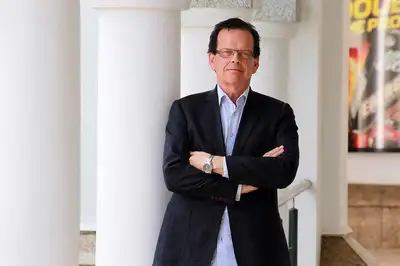
How the female and male characters in Suits work together provides insight into gender relationships in the workplace.
This is the fourth in a series of six articles on co-leadership by Dr Ralph Bathurst, who is the academic coordinator for Massey’s Master of Advanced Leadership programme. Each week he explores aspects of co-leadership using popular tv series Suits and its main characters, Harvey Specter and Mike Ross, as exemplars.
Read Article 1: What Suits teaches us about better leadership models
Read Article 2: Suits: Co-leading with the head and heart
Read Article 3: Suits: Leadership and play
The world of the law firm Pearson Hardman in tv show Suits mirrors other organisations with its layers of leaders and middle managers. The legal partnership arrangement is identical to other professional firms where the partners carry out governance responsibilities and the managing partner assumes the CEO role. My discussions of Suits, focusing on the relationship between Harvey Specter and Mike Ross, shows how clear lines of authority can be disrupted. I have been saying that co-leadership is a more productive way of operating and that formal hierarchies belong to a bygone age.
However, there is still the proverbial ‘elephant in the room’ that lurks in the background of any discussion about leadership – gender. The #MeToo movement which swept the globe from around October 2017 has placed directly in front of us the problem of sexual harassment in the workplace. At about that time, the ‘outing’ of high-profile legal firms in New Zealand, where senior males have taken advantage of female interns at social functions, has brought this problem to our own doorstep. It seems that in both the overseas and local examples there has been a conspiracy of silence because the harassers are usually in significant positions of power and influence. Put bluntly, the abusers have been leaders.
Bullying and harassment have been identified as significant problems in organisations for some time. Even though these forms of manipulation and control are well known and long-standing, they are very difficult to stamp out.
One solution has been to promote more women to senior leadership positions. It is often said that women are more nurturing and cooperative, and therefore make better leaders than their male counterparts. I understand this rhetoric, but I do not agree with it. Promoting women as alternatives to men, and to somehow balance masculine with feminine ways of being, is an old answer to an endemic issue; a Victorian solution to a Victorian problem.

Dr Ralph Bathurst.
Affirmative action isn't a full answer
In the first discussion about co-leadership, I noted that Carlyle’s beliefs in the great man have become the predominant way we frame leadership. Sigmund Freud had a similar view, that leaders are great men. However, Freud’s leader is a father figure who can also impart punishment. The leader is not always a kindly soul who people would follow out of admiration and respect. Freud’s conception of leadership invoked a darker, more sinister figure who could make stern judgements.
To simply replace the masculine father figure with a feminine mother invites the same transference that fascinated Freud. Nothing changes at the heart of the organisation, whether a man or woman is at the helm. As I say to my students, “Women make very poor leaders…[pause for effect]…and so do men!”
The law firm that provides the setting for Suits is led by a woman: Jessica Pearson. She is as hard-nosed and demanding as Harvey. Her elegant outfits and pleasant smile hide a vicious streak. She expects loyalty and demands obedience to the firm’s central mission of making money. Jessica is a kind of mother-figure, a woman who runs her family of lawyers with the brooding and defensive eyes of a hen with her chickens. When she finally leaves the firm, Harvey must deal with her absence as he did in his younger years, when his parents split up and his mother left him.
Diversity versus inclusion
Donna is Harvey’s PA, and she does not need to declare her surname because she is “the Donna”; intuitive, emotionally available and perceptive. Her ability to be straight-up with Harvey helps him avoid potential pitfalls and navigate difficult relationships with clients. Donna is always elegantly groomed, and we might be tempted to cast her as a typical female. However, she is much more than this. She is also in a co-leading relationship with Harvey.
Donna working with Harvey presents a future for gendered leadership where men and women together seek to solve difficult problems. To privilege one over the other robs both of opportunities to creatively discover productive ways of leading. Yet Suits does not resolve the gender issues satisfactorily because the drama relies on inherent inequalities between men and women, associates and partners, to make the stories compelling.
Unfortunately, women are often excluded from positions of power because of their gender. To correct that imbalance, some organisations have adopted affirmative action programmes and, in the name of ‘diversity’, have employed women in senior leadership and governance roles. However, this is only a half-way solution; you can easily achieve a diverse work force but still not take strategic advantage of the full range of insights that people bring. ‘Inclusion’ is the next step but is much more demanding. It requires a mutual respect for each other and a valuing of the skills that others bring to the table because of their difference.
Inclusion calls for workplaces where ethnicity, country of origin and gender are no longer issues to be noted. Inclusion goes beyond identifying characteristics and seeks for people to be together in mutual respect. All genders must be valued equally if leaders are going to have any lasting influence. Inclusive workplaces open space for people to work together productively – collaborating and co-leading by respecting and valuing each other as equals.